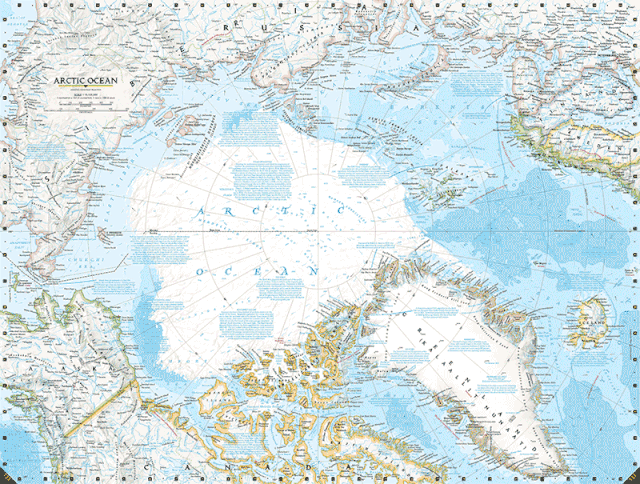National Geographic Map Shows the Retreat of Arctic Ice that Climate Science is Warning Us About

So said President Obama after the debut of his most aggressive climate action policy to date.
The rapid and intense melting of the arctic sea ice is brilliantly captured by National Geographic in their map above from 1999 to 2014. Since climate change is creeping up right behind us and most tend not to notice until a climate related disaster occurs, this illustration jolts the observer to see the true picture of ice loss.
This rapid melt is due to a feedback loop where warm ocean waters are causing thinning of ice and more open water. This melting causes less reflection of the sun’s energy back to space causing even more melting to occur.
From NASA
The Arctic sea ice cover today is much thinner on average than it was years ago. Satellite imagery, submarine sonar measurements, and data collected from NASA’s Operation IceBridge indicate that the sea ice thickness is as much as 50 percent thinner than in previous decades, going from an average thickness of 3.8 meters (12.5 feet) in 1980 to 1.9 meters (6.2 feet) in recent years. Older, thicker ice is being replaced by thinner, seasonal ice.Most of the Arctic Ocean used to be covered by multiyear ice, or ice that has survived at least two summers and is typically 3 to 4 meters (10 to 13 feet) thick. This older ice has declined at an even faster rate than younger ice and is now largely relegated to a strip along the northern coast of Greenland. The rest of the Arctic Ocean is dominated by first year ice, or ice that formed over the previous winter and is only 1 to 2 meters (3 to 7 feet) thick.
“Thinner ice melts completely at a faster rate than thicker ice does, so if the average thickness of Arctic sea ice goes down, it’s more likely that the extent of the summer ice will go down as well,” said Joey Comiso, senior scientist at NASA Goddard and coordinating lead author of the Cryosphere Observations chapter of the upcoming report of the Intergovernmental Panel on Climate Change. “At the rate we’re observing this decline, it’s very likely that the Arctic’s summer sea ice will completely disappear within this century.”







Follow Us!